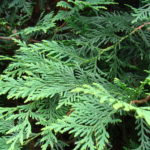This past weekend I spent a whole day walking in the woods and flowering trees at my local arboretum. Many of the wildflowers were in bloom, the crab apple trees were in full flowery showiness, and the marsh marigolds were bright yellow and poking through the cattails.
As a practitioner of Chinese medicine, I tend to look at the world a little differently than most. When I look at people, things like their appearance, the sparkle in their eyes, or the condition of their skin all have meaning to me diagnostically. This is also true when I walk through the woods and fields here in Minnesota. Beyond their beauty, many of the plants that I see have healing properties, which adds another dimension to what I’m seeing.
Here are some common wild flowers (and a couple of trees) that are used as healing herbs in Chinese medicine. Note however, that most of these plants need to be processed in some way and should not be ingested right out of the ground. Also, for easy explanations on any of the Chinese medical terminology, check out Simple Steps: The Chinese Way to Better Health.
-Wild Ginger. This shade-loving ground cover can be seen in most wildflower gardens. In Chinese medicine this warm herb is used to treat colds and flu, especially if you’re not running much of a fever, but have lots of aches and pains. It’s also useful if you have congestion in your lungs.
-Solomon’s Seal. Another wildflower found deep in the shade, the rhizome (bulb) of this plant is used to nourish and moisten Yin, and can be used for conditions such as Lung or Stomach dryness.
-Jack-in-the-Pulpit. Also known as Pinellia, this is one of my favorite woodland plants. The rhizome of this plant is pretty drying, and is used to treat phlegm, cough, and chest congestion. In some circumstances, it can also be used for nausea.
-Dandelion. Wildflower or weed? Dandelions are found everywhere including my front lawn! The leaves of this plant can actually be picked and eaten as a salad green–if they haven’t been treated by any lawn or garden chemicals. As an herb, its cold and bitter properties help to clear heat, and can also be used for urinary tract infections. Mashed into a pulp, it can be used topically to help heal sores and abscesses.
-Honeysuckle. This sweet flower actually has antimicrobial functions and is used to treat infections, and sores. Its cooling and infection-fighting properties make it useful in treating sore throats, abscesses, dysentery, and bladder infections.
-Mint. Found in many gardens, but also in the wild, mint is a cool herb which can be picked, dried, and used as a seasoning or drunk as tea. It’s good for when you have a cold or the flu, especially if you’re running a fever. It also soothes your Chinese Liver, so if you’re stressed out, have a cup of mint tea!
-Cattails. The pollen (the fuzzy tops from this common marsh plant) is quite effective in stopping bleeding, both when applied externally or taken internally.
-Arborvitae leaves and twigs. Also known as the Chinese Cedar, this herb is considered cool in nature and can stop bleeding. It’s used for a wide range of symptoms, from bleeding gums to bloody urine. Also, the seeds of this tree nourish your Chinese Heart and calm your spirit. In this capacity, it can be used for things like irritability, insomnia, anxiety, and heart palpitations.
-Hawthorne. Hawthorne tees bloom in the spring, and their (very!) sour fruit looks like small crab apples. Hawthorne is a go-to herb to soothe your digestion, and in China, the fruit is made into a sour candy that’s sold as a digestive aid (Hawflakes). Some research also indicates that Hawthorne fruit and leaves may help lower blood pressure and decrease cholesterol.
While the woods are full of healing herbs, simply walking through the forest is healing in its own right. Research has documented that walking through the woods can decrease stress, lower blood pressure, decrease cortisol, ward off depression, and increase immunity. So, while the wildflowers are blooming and the flowering trees and shrubs are in their full glory, go outside and soak it up!






